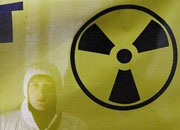Located above the core within the reactor pressure vessel, the steam dryer is a crucial component that removes excess moisture from steam created in the plant’s reactor before it is delivered into the turbine-generator units to produce low-carbon, base-load electricity. With utilities seeking regulatory permission to extend the operating licenses and increase the output of more of their BWR reactors, GEH developed the methodology to help operators evaluate the condition of their steam dryers.
Utilities must reference the steam dryer analysis when applying to the NRC for either a license amendment for an existing BWR unit—such as for a proposed plant uprate—or a license to build a new reactor based on GEH’s Generation III Advanced Boiling Water Reactor or next-generation Economic Simplified Boiling Water Reactor designs.
GEH developed its analysis methodology to address NRC questions regarding the ability of U.S. utilities to predict how BWR steam dryers respond under current or future production requirements.
“As some U.S. utilities are preparing to possibly build new plants that offer greater reliability and efficiency, other operators are instead seeking NRC approval to extend the licenses of their existing reactors and uprate their production levels,” said Kevin Lagasse, senior vice president of nuclear services for GEH. “Our newly approved methodology is important to both trends by enabling a more accurate evaluation of a steam dryer’s capabilities, further enhancing the NRC’s confidence in an applicant’s project.“
In the case of a proposed uprate, based on analysis results, a modified or new steam dryer may be required to achieve uprate conditions. GEH’s skilled teams at its operations in Wilmington, N.C., and Canonsburg, Pa., offer industry leading expertise in the design, manufacture, implementation and instrumentation of modified and new BWR steam dryers.
Entergy Nuclear is the first U.S. utility to utilize the entire breadth of GEH’s steam dryer methodology, including the plant based load evaluation (“PBLE”), as part of a proposed extended power uprate of the utility’s existing Grand Gulf BWR station in Port Gibson, Miss. Entergy is the nation’s second largest nuclear plant operator.
In addition to the Grand Gulf application, this methodology has been benchmarked against instrumented dryer data from Exelon’s Quad Cities Generating Station Unit 2 reactor in Illinois and the Susquehanna Steam Electric Station’s Unit 1 reactor in Pennsylvania, operated by PPL Susquehanna. Additional projects are underway in Spain, Japan, and the United States.
27 Декабря 2025 | суббота | 12:38


